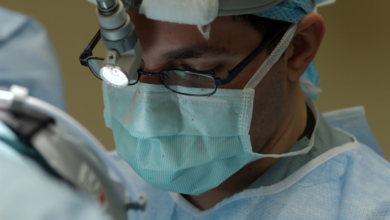How Long Does Hip Resurfacing Last?

Hip resurfacing is becoming more widely used in Australia as an alternative to standard hip replacement, particularly for younger and more active individuals. Hip resurfacing preserves more of your own bone than a total hip replacement, allowing for more stability and more motion. But one thing that the patient typically has is, “How long will it last?” If you are in the situation of considering the procedure being performed on you, knowing what makes hip resurfacing last as long as it does and what you can do to make the health of it endure the test of time is knowledge that is valuable to have.
Hip Surfacing Effectiveness
The survival of a hip resurfacing implant will differ depending on many variables, including the metal employed, the lifestyle of the patient, and also the ability of the surgeon. The majority of the new implants are made up of high-strength, high-grade metals like cobalt-chromium. They are engineered for decades of usage and abrasion but degenerate sooner when rigorous-impact sports like high-impact exercises are enjoyed.
Your bone and age are also significant. Healthier patients who are younger will fare better in the long run, since their bones can be elongated further to the implant. Weaker patients, i.e., osteoporotic patients, will also have a lower permanent life for the implant.
How dexterous and meticulous the orthopaedic surgeon is while operating on them also matters. Expert hip resurfacing surgeons in Melbourne will allow for the longest life for your surgery.
An uncomplicated procedure allows for the best possible positioning of the implant, limiting complications and maximising time. Research suggests that hip resurfacing implants last for 10 to 20 years, and even beyond that, the majority of patients can stay mobile without experiencing pain. With each patient being unique, nonetheless, body weight, alignment, and activity level will finally determine the lifespan of the implant.
See also: Enhancing Financial Health: The Critical Role of Charge Capture in the Revenue Cycle
Tips for Keeping Your Hip Resurfacing Implant Healthy
After hip resurfacing, you can do several things to keep your implant in good health and working order. Periodically, you must see your orthopaedic surgeon to monitor the condition of the implant and detect early signs of wear or misalignment. Frequent follow-ups will avoid making minor issues life-threatening complications.
It is also important to be a healthy weight. Being overweight puts extra stress on the implant and increases the likelihood of early wear. Low-impact exercise such as swimming or cycling can assist in maintaining the muscles in your hip that stabilise your hip without overstraining the resurfaced joint.
Diet comes into play. Consumption of foods with high amounts of calcium and vitamin D help in restoring bone strength to ensure that it is able to resist the implant. Refrain from smoking and reduce or avoid drinking alcohol. Both help in lessening threats by reduction of bones and inflammation decrease.
While activities like running or contact sports are generally to be avoided, a well-designed rehabilitation program under the direction of a physical therapist can allow you to regain mobility, strength, and a healthy return to active life.
Is Hip Resurfacing Right for You?
For the majority of Australians, hip resurfacing is a life-changing procedure, restoring mobility and pain relief. With proper intervention and with suitable lifestyle adjustment, these implants have been proven to provide long-term outcomes, most of which are comparable with and better than that of conventional hip replacement.
If you are considering hip resurfacing, consult with a specialist orthopaedic surgeon to assess your case individually, determine the optimal treatment, and set your expectations into perspective. Being educated and empowered will not only accelerate your rehabilitation, but also optimise the life of your implant for an active, productive life in future years.






